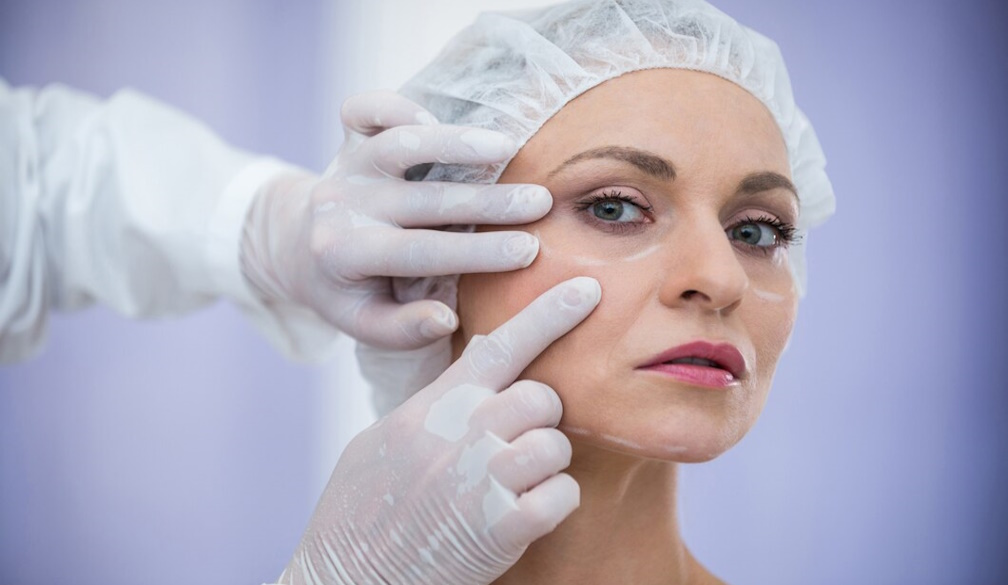Lunchtime Facelifts: Quick & Effective Procedures for Busy Professionals
- Written by The Times

Busy professionals often find themselves juggling demanding careers, family obligations, and social commitments. With such a tight schedule, it can be difficult to make time for personal care, let alone undergo traditional, lengthy cosmetic treatments.
However, advancements in aesthetic treatments have paved the way for non-invasive procedures that are both quick and effective, allowing individuals to maintain their youthful appearance without taking extended time off from their hectic workday.
Among these, the ‘lunchtime facelift’ has gained considerable popularity, offering professionals the opportunity to refresh their appearance in the middle of the day—often with no downtime.
What is a ‘Lunchtime Facelift’?
A ‘lunchtime facelift’ is a broad term used to describe a range of minimally invasive procedures designed to reduce the visible signs of ageing.
Such procedures typically take an hour or under, can be performed during a lunch break, and require little to no recovery time.
In this article, we’ll explore some of the most popular ‘lunchtime facelift’ treatments.
Understanding the Science of Ageing
Before delving into these anti-ageing procedures, it’s important to understand the main causes of ageing in the skin.
As we age, the production of collagen and elastin – the proteins responsible for maintaining skin’s elasticity and firmness – begins to slow down. This reduction leads to the formation of fine lines, wrinkles, sagging skin, and an overall loss of volume in the face.
Other factors that contribute to the ageing process include genetics, environmental stressors such as UV exposure, and lifestyle choices such as smoking and poor nutrition.
While ageing is inevitable, many individuals choose to address the visible signs of ageing to maintain a youthful and refreshed appearance. In the past, surgery was often the go-to solution for more dramatic changes, but today, there are many effective non-surgical options available at most cosmetic clinics, that produce impressive results in a fraction of the time and cost.
Popular ‘Lunchtime Facelift’ Treatments
- Botox and Dysport Injections
Botox, and its competitor Dysport, are two of the most well-known anti-wrinkle injectable treatments. They use botulinum to temporarily relax the muscles that cause wrinkles and fine lines, particularly in areas such as the forehead, between the eyebrows (frown lines), and around the eyes (crow’s feet).
The procedure itself is minimally invasive, requiring only a few tiny needle pricks in targeted areas. There’s no downtime, and results typically begin to show within 48 hours, with the full effects visible within one to two weeks.
These wrinkle relaxers usually last between three to six months.
- Thread Lifts
For those looking for a non-surgical alternative to a traditional facelift, PDO thread lifts are another excellent option.
This procedure involves the insertion of fine threads made of dissolvable materials under the skin. The threads are used to lift sagging areas of the face, such as the cheeks and jawline, while also stimulating collagen production to promote long-term rejuvenation.
Thread lifts typically take around 30 minutes to an hour to complete, making them perfect for individuals on a tight schedule. While some bruising and swelling may occur, recovery time is minimal, and the results can last up to 18 months.
- Dermal Fillers
Another popular option for a ‘lunchtime facelift’ is the use of dermal fillers.
Dermal fillers are an injectable treatment designed to restore volume to areas of the face that have lost fullness due to ageing. As we age, the face tends to lose fat and bone density, particularly in the cheeks, under the eyes, and around the mouth.
Dermal fillers, made from hyaluronic acid or other biocompatible substances, are injected into these areas to add volume, smooth out wrinkles, and enhance facial contours.
Common fillers include Juvederm, Restylane, and Radiesse, which can be used to lift sagging cheeks, smooth nasolabial folds (the lines around the nose and mouth), plump up lips, and diminish under-eye hollows. The results are immediate, with no downtime required.
The effects of dermal fillers typically last from six months to a year, depending on the type of filler and the area treated.
- Microneedling
Microneedling is a minimally invasive procedure that involves the use of a device equipped with tiny, fine needles to create micro-injuries in the skin.
These controlled wounds stimulate the body’s natural healing process, encouraging the production of collagen and elastin.
Microneedling is particularly effective for improving skin texture, reducing fine lines, and diminishing the appearance of scars and stretch marks.
For professionals seeking a quick, lunchtime treatment with minimal recovery time, microneedling is a great option. The procedure typically takes around 30 to 45 minutes, and while some redness and swelling may occur immediately after, it usually subsides within a few hours.
Microneedling treatments can be combined with platelet-rich plasma (PRP) therapy, commonly referred to as the ‘vampire facial,’ to further enhance results.
- Laser Skin Resurfacing
Laser skin resurfacing is a non-surgical treatment that uses concentrated beams of light to target specific layers of skin, promoting collagen production and smoothing out wrinkles, fine lines, and age spots.
Fractional CO2 lasers and Erbium lasers are the most commonly used for this purpose, and they can help with everything from acne scars to pigmentation issues.
Although laser treatments may cause some redness and mild swelling after the procedure, the downtime is minimal, often allowing individuals to return to work the next day with a more youthful, glowing complexion.
Results continue to improve over the following weeks as collagen production increases, making this an ideal procedure for professionals seeking long-lasting anti-ageing benefits.
Benefits of ‘Lunchtime Facelifts’ for Busy Professionals
‘Lunchtime facelifts’ have become a go-to solution for professionals who need to look and feel their best without committing to the time and financial investment of traditional surgeries. Some of the key benefits include:
- Minimal Downtime: Most treatments require no downtime or very little recovery, allowing patients to return to work immediately after the procedure.
- Convenience: The procedures are quick, often lasting less than an hour, and can easily fit into a lunch break or between meetings.
- Natural-Looking Results: These treatments are designed to enhance the natural contours of the face, resulting in a refreshed, youthful appearance without looking ‘overdone.’
- Affordable: Non-surgical treatments are typically more affordable than traditional facelift surgery, making them accessible to more people.
- Cumulative Results: Many of these treatments can be repeated regularly to maintain results, giving professionals the flexibility to adjust their treatments based on their needs.
Conclusion
With the right treatment plan, busy professionals can maintain a radiant, rejuvenated appearance, helping them to look and feel their best every day.
However, thorough research is required to ensure the right treatment plan is chosen, as not all anti-ageing procedures are suitable for everyone. When it comes to cosmetic treatments, there is no ‘one-size-fits-all’ solution. Individual skin types, medical histories, and specific ageing concerns must be taken into consideration.
















